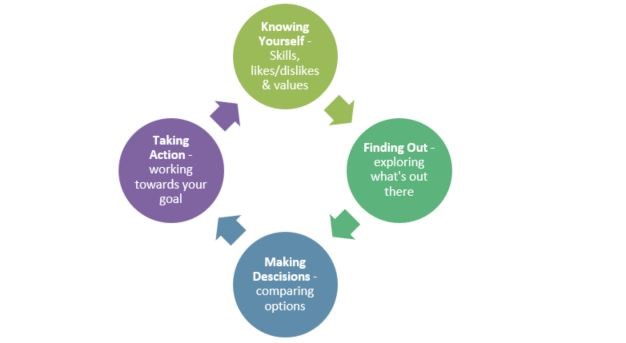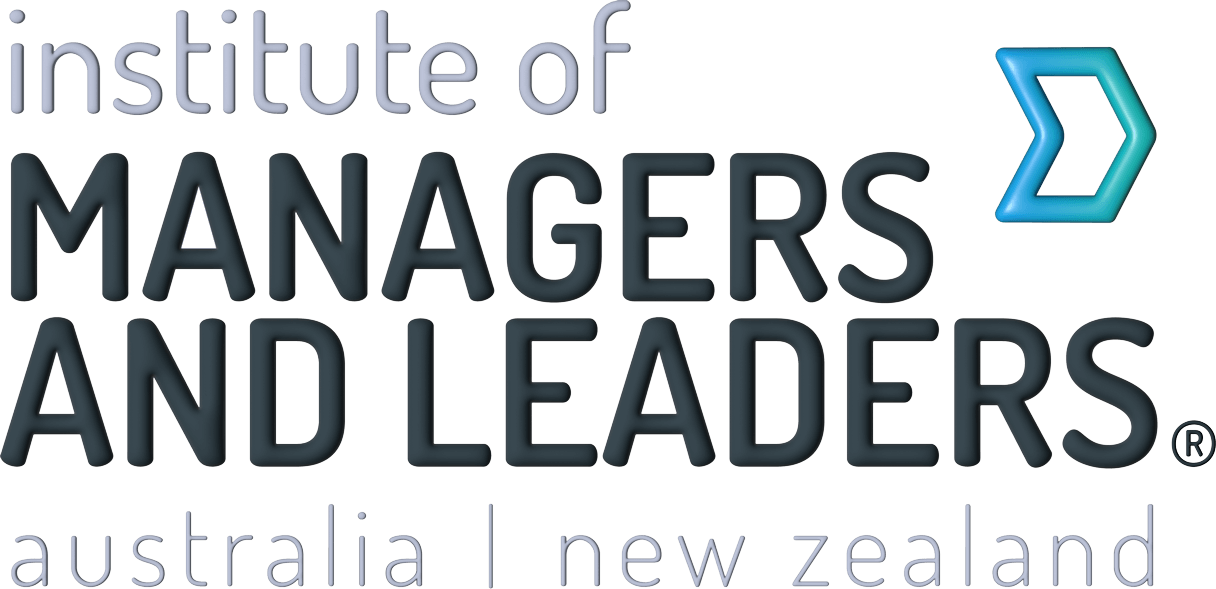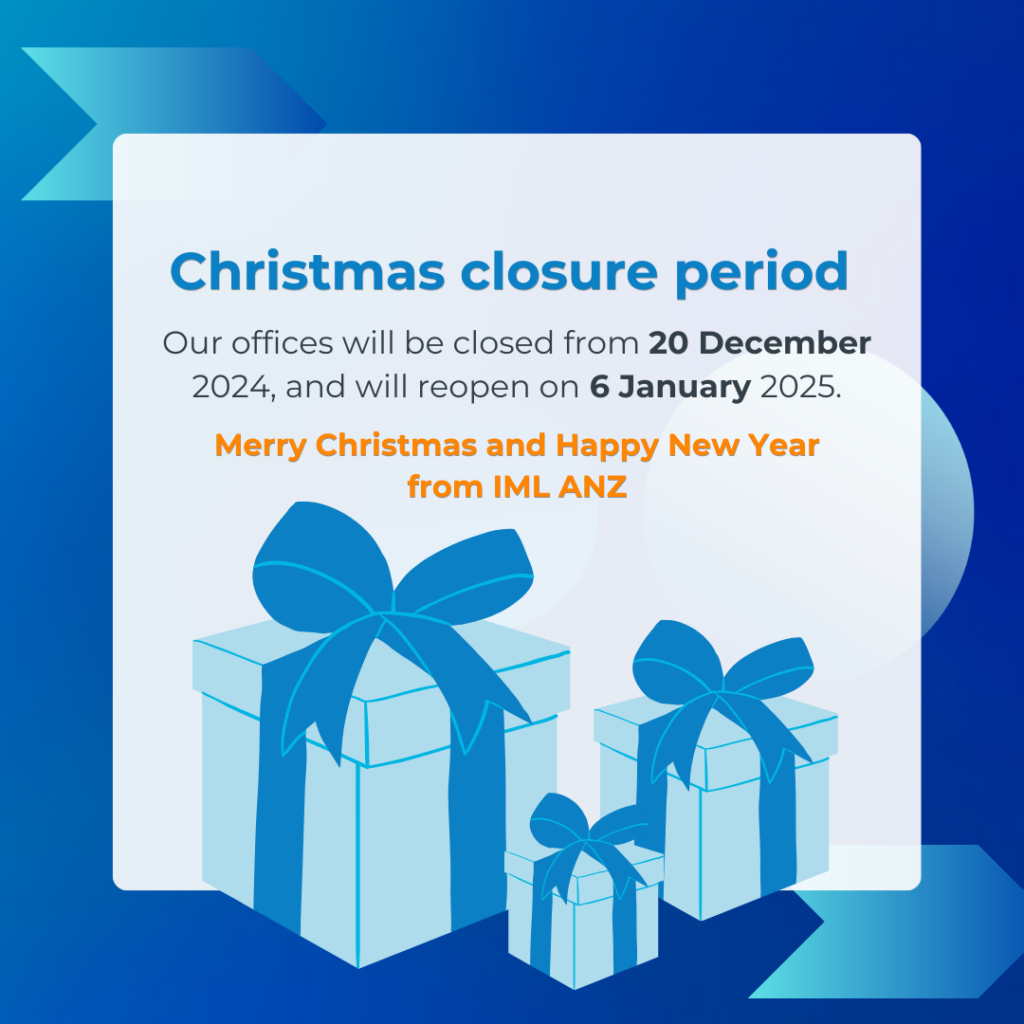Gone are the days when careers meant moving straight up a ladder. These days, career paths have become more like a lattice – you might take steps upwards, sideways or even downwards.
That’s what makes career planning a crucial step in managing your learning and development. Regardless of where you are in your career it’s useful to explore the path that you’re on. By developing new knowledge and skills, you’ll be well equipped to move into that new opportunity, no matter where it is on your career lattice.
Think of career planning as a continuous process of:
- Reflecting on your interests, values, skills and preferences
- Exploring the life, work and learning options available to you
- Ensuring that your work fits with your personal circumstances
- Fine-tuning your work and learning plans to help you manage changes in life and work
You can revisit and use this process at any stage of your career.

Start at the step that is most relevant for you now.
The career planning process has four fundamental steps:
Step 1: knowing yourself
Step 2: finding out
Step 3: making decisions
Step 4: taking action
Let’s take a look at each step.
Step 1: knowing yourself
Ask yourself:
- Where am I at in knowledge and skills now?
- What do I want out of a job or career?
- What do I like to do?
- What are my strengths?
- What is important to me?
- Where do I want to be?
- How will I get there?
After this, you can work on getting to know your skills, interests and values.
At the end of this step you will have a clearer idea of your work or learning goal and your individual preferences.
The SWOT analysis in Article 1 can also be of great use to you at this point. You can use this information about yourself as your personal ‘wish list’ against which you can compare all the information you gather in the next step: finding out. Your personal preferences are very useful for helping you choose your current best option, which you can do in Step 3: making decisions.
Step 2: finding out
This step is about exploring the roles and learning areas that interest you. Once you have some idea of your job preferences you can research the specific skills and qualifications required in those professions.
- Explore. Ask people around you about their roles, how they achieved success in their career. This mentoring program is an excellent forum for learning about others’ stories how they built their career.
- Identify. Pick out roles that interest you. Assess whether your skills and interests match up with the job’s requirements. Do you have skills that are transferrable for this particular role or profession?
- Develop. Taking on projects in your current workplace is a great way to close any knowledge and skills gaps to further your career journey. Also, look at developing skills outside of work. Sporting, community and charity groups always need people with a vast range of skills.
- Locate. Do research not just on careers but on companies who you think you’d like to work with and where your interests and values align. Find out where your preferred roles are on offer.
At the end of this step you will have a list of preferred roles, companies you’d like to work with and opportunities for further learning.
Step 3: making decisions
This step involves comparing your options, narrowing down your choices and thinking about what currently suits you best.
Ask yourself:
- What are my best work or training options? How will these currently impact on my work and life situation? How long will it take to get appropriate knowledge or qualifications and how do I manage my career in the meantime?
- How do they match with my skills, interests and values?
- How do they fit with the current labour market? What’s happening in the economy and politically? Is there opportunity for career growth within my current organisation or region?
- How do they fit with my current situation and responsibilities?
- What are the advantages and disadvantages of each option?
- What will help and what will hinder me?
- What can I do about it?
At the end of this step you will have narrowed down your options and have more of an idea of what you need to do next to help you achieve your goals. We would recommend that you use the Kolb Action Learning model in your Mentoring Resource book. This will provide an excellent tool to assist you at this stage of planning.
Step 4: taking action
Here you plan the steps you need to take.
Use all you have learnt about your skills, interests and values together with the information you have gathered about the world of work to create your plan.
Begin by asking yourself:
- What steps will help me achieve my work, training and career goals?
- Where can I get help?
- Who will support me? Who can give me a reality check about my choice at this stage? What might be some of the barriers moving forward and how will I overcome them?
At the end of this step you will have:
- A plan to help you explore your options further (work experience, work shadowing or more research); or
- A plan which sets out the steps to help you achieve your next learning or work goal
- Decide which step is relevant for you right now and start from there.
In all of this you need to remember that your career doesn’t happen in isolation to other aspects of your life.
As you work your way through the model ensure that you’re taking your entire life circumstance into any decisions you make.



